 Weird Stuff
Weird Stuff  Weird Stuff
Weird Stuff  Mysteries
Mysteries 10 Tragic Disappearances and Deaths in Joshua Tree National Park
 History
History 10 Ways Childhood Really Sucked in the Old West
 Music
Music 10 Name Origins of Famous Bands from the 1990s
 Religion
Religion 10 Biggest Turnarounds by the Catholic Church
 Weird Stuff
Weird Stuff 10 Unbelievable Times Laws Had Unintended Consequences
 Humans
Humans Ten Historic Women Who Deserve Way More Credit Than They Got
 Movies and TV
Movies and TV 10 Films That Spawned Major Lawsuits
 History
History Ten Times Towns Were Wiped Off the Face of the Earth
 Creepy
Creepy 10 of the Most Disturbingly Haunted Public Houses in the UK
 Weird Stuff
Weird Stuff 10 Niche Subcultures That Are More Popular Than You Might Think
 Mysteries
Mysteries 10 Tragic Disappearances and Deaths in Joshua Tree National Park
 History
History 10 Ways Childhood Really Sucked in the Old West
Who's Behind Listverse?

Jamie Frater
Head Editor
Jamie founded Listverse due to an insatiable desire to share fascinating, obscure, and bizarre facts. He has been a guest speaker on numerous national radio and television stations and is a five time published author.
More About Us Music
Music 10 Name Origins of Famous Bands from the 1990s
 Religion
Religion 10 Biggest Turnarounds by the Catholic Church
 Weird Stuff
Weird Stuff 10 Unbelievable Times Laws Had Unintended Consequences
 Humans
Humans Ten Historic Women Who Deserve Way More Credit Than They Got
 Movies and TV
Movies and TV 10 Films That Spawned Major Lawsuits
 History
History Ten Times Towns Were Wiped Off the Face of the Earth
 Creepy
Creepy 10 of the Most Disturbingly Haunted Public Houses in the UK
10 Crazy Things Patron Saints Can Protect You From
The Roman Catholic Church keeps records of thousands of deceased persons it has recognized as saints—people whose presence in Heaven it considers verified. Given these saints’ lofty stature, their help (or intercession) is often invoked by Catholics on Earth to petition God for help with particular issues. The issues for which they are invoked are usually connected with some event or trial in the saint’s own life. Thus, a patron saint for a given issue is frequently designated as such for their connection to that issue.
That said, patronages can sometimes take some pretty strange twists and turns. Here are some of the strangest. You probably never thought you could turn to the following saints for protection from . . .
10 Poison

Saint Benedict of Nursia (c. 480–543) was an innovator in Catholic monasticism.[1] The son of a Roman noble, he grew up in a house marked by wealth and privilege. Like many teens, however, he soon rebelled against the values of his parents. In Benedict’s case, that meant solitude and life as a humble monk. He sequestered himself in an isolated cave in the mountains of Italy, where his prayer and introspection led him to develop a landmark “rule of life” for laypersons seeking to live in godly ways. Many eventually began to follow his teachings. He founded many monasteries, including the great one at Monte Cassino, where Benedict died.
Not all of those who were exposed to Benedict’s rule were fans of it, however—not even fellow monks.
When Benedict was still in the hermit-like stage of his life, a group of monks from a nearby monastery approached him and begged him to become their new abbot. Benedict resisted, believing that their existing ways would clash with the strictness of his rule. He was right.
The monks finally convinced Benedict to become their abbot, and he left his cave to do so. But once he got settled in, they soon found his sternness to be unbearable. The monks chafed under his rule, until one day, they conspired to poison him, to rid themselves of the man they had invited to lead them. Thankfully, it didn’t work. Benedict got the message, though, and returned to his hermitage.
History does not record whether there were any new applicants eager to take the job after Benedict left the position.
9 Earaches
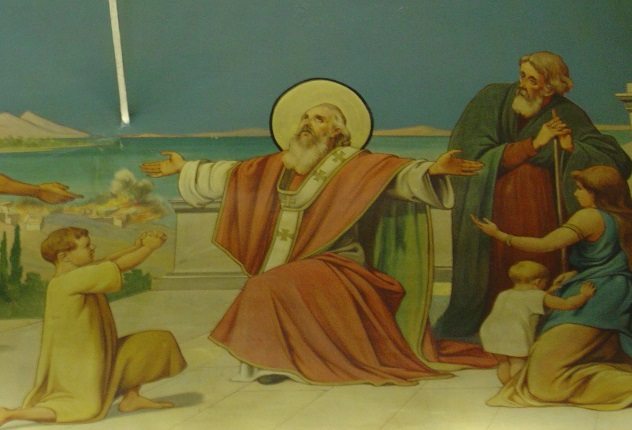
Saint Polycarp of Smyrna (c. 69–155) was one of the initial “Fathers of the Church,” renowned since the early period of Christianity for laying down many of the foundations of Christian thought.[2] Polycarp studied at the feet of St. John the Apostle and thus could say that he learned from a man who had known and walked with Christ himself. Despite the era, Polycarp lived an incredibly long time. He survived for 70 years after being appointed bishop of the city of Smyrna (now Izmir, Turkey). And when he died, it was only because the local Roman officials executed him for refusing to reject his faith.
It apparently wasn’t easy for them. After binding Polycarp at the stake and kindling a fire beneath him, the fire failed to harm him. The Romans had to resort to spears and swords before they succeeded in the barbaric execution.
No source seems to say why Polycarp is the go-to saint for earaches. It may well be that his sermons and professions of faith gave one too many earaches to the Romans before they decided upon his execution!
8 Birth Complications
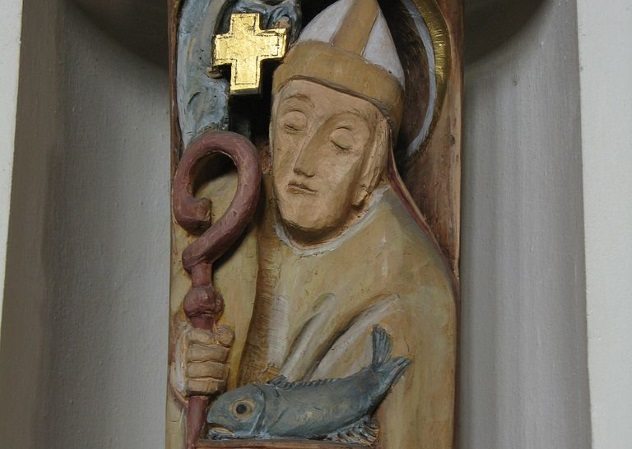
Saint Ulric of Augsburg (890–973) spent his life in service to the diocese of Augsburg, Germany.[3] As a young man, he served his uncle Adalbero, the previous bishop. After later succeeding to that office, he distinguished himself by avoiding the court of the Holy Roman emperor—where favors and influence were to be found—and preferring to stay at home among the faithful. He served them well, erecting many churches and providing strong leadership throughout internal strife and external invasion.
Legend states that when Bishop Ulric said Mass and offered his chalice for the drinking of the Eucharist, pregnant women would benefit. Those who drank from the chalice were said to always have easy deliveries for their children. This blessing was seen as especially profound in an era in which all too many pregnancies ended in death for both mother and child.
7 Bruises
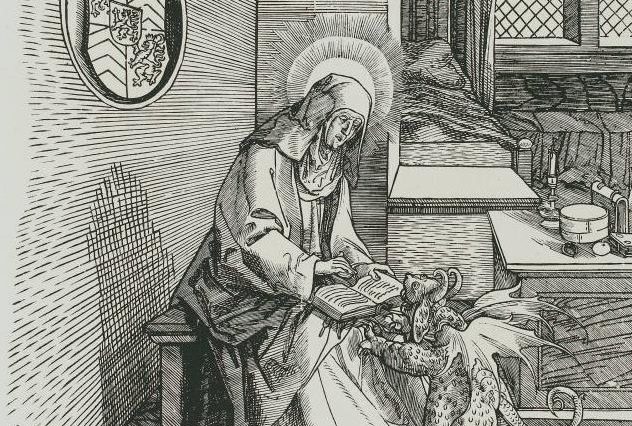
Saint Amalburga (or Amelia) (d. 690) was a Belgian noblewoman who, like Saint Benedict above, eventually left behind her life of privilege to devote herself to God.[4] She married young, and her household was a holy one: No less than three of her children (Gudila, Reinelda, and Emembertus) would later be recognized as saints in their own right. Once the children had grown, she and her husband withdrew from the world to take religious vows. She became a nun, while he became a monk.
Her patronage of protection against bruises comes from a legend which concerns a rival suitor for her hand. Supposedly, the young nobleman who would one day become Charlemagne was infatuated with her and tried mightily to gain her affections. The legend states that as he insistently tried to pull her away from the church where she was praying, he acted with such force that it first bruised, then broke her arm! Hardly noble behavior from Charles the Great. But (again, according to legend) a miracle occurred in which her arm was instantly healed, and she forgave young Charles, who repented of his sin against her.
File that one under “The Day Charlemagne Learned to Take a Hint.”
6 Caterpillars
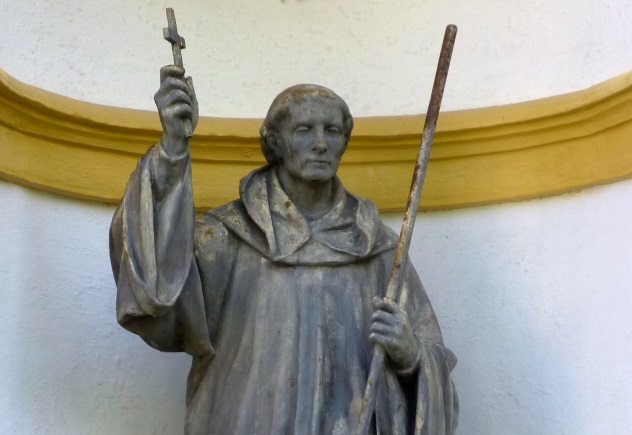
Saint Magnus of Fussen (died c. 665) is an obscure saint whose life is known mainly from a single document known to contain many exaggerations.[5] A Benedictine priest (following the rule of Saint Benedict, above), Magnus headed up a monastery in Switzerland and spread the Gospel in what is now Bavaria. Many incredible stories about him circulated in later years, usually on the subject of his interactions with animals. Dispersing snakes, befriending bears . . . all this was part of Magnus’s legend.
The best legend, though, deals with his patronage for protection against caterpillars—and that’s not even the weirdest part. The weirdest part is that it involves a baby dragon.
Supposedly, near the town of Fussen, a very young dragon was causing a commotion in the countryside. Magnus, rather than fighting the dragon (as Saint George might have done), instead sought to iron out the differences between it and the local population. This led to the youngster’s gainful employment as an assistant to the farmers of the region, wiping out the vermin that infested their crops: rats, mice, and (you guessed it) caterpillars.
If you require the intercession of a saint who has friendly dragons to do his bidding, Magnus is your man.
5 Cramps
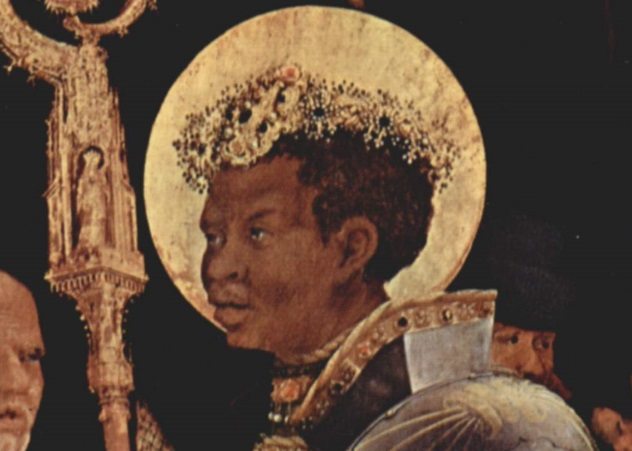
Saint Maurice (c. 250–286) is one of the soldier saints, as he supposedly commanded an entire Roman legion in the later days of the empire.[6] Records from that time are spotty, but they do mention Maurice’s unit as being a legion from Thebes, Egypt, composed almost entirely of Christians. He is all the more notable for traditionally being depicted as a black African in paintings and stained glass windows, due to his name and birthplace.
Like Saint Polycarp above, Maurice met his death as a martyr at the hands of the Romans. Supposedly in 286, during a campaign in Gaul, the entire army was ordered to engage in pagan sacrifices to bring the favor of the Roman gods down upon the troops before battle. Maurice and some of his fellow Christian soldiers refused, and army officials had the entire group of dissenters beheaded in retaliation. It seems doubtful that the army’s chances in battle were improved by executing a bunch of its soldiers beforehand.
No one knows exactly why Maurice is associated with protection against cramps. But as someone who went willingly to lose his head on the chopping block, we can assume he would laugh at cramps and other smaller discomforts . . .
4 Nightmares
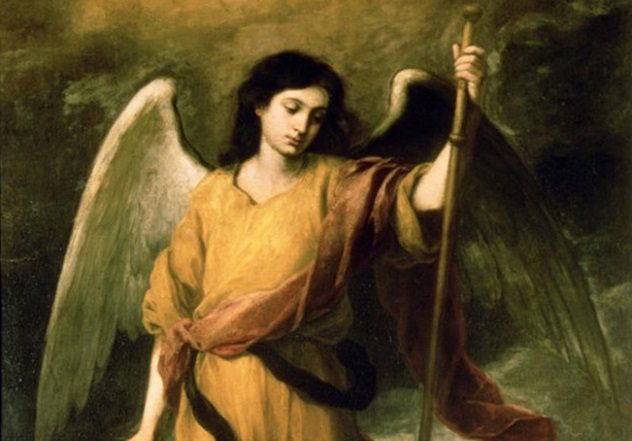
Saint Raphael is different from the other saints on this list in at least one important way: He is not human![7] Rather, he is one of the named archangels recognized in the Catholic Church. He was granted the recognition of sainthood in honor of the great help he has given to humanity. Raphael is acknowledged as the patron saint of healing.
In the Old Testament Book of Tobit, Raphael is a major presence. The book relates the story of how Raphael guarded Tobit and his son Tobiah in numerous ways, from the binding of evil spirits encountered in the desert, to healing Tobit of his blindness, to delivering Tobiah and his fiancee Sarah from a demon who plagued the young woman.
Raphael’s patronage of healing expands to all forms of wellness: physical, mental, and spiritual. Due to his combat with demons, he is also regarded as a great enemy of them. Asking for Raphael’s aid against nightmares derives from both of these things, since severe nightmares are usually attributed to a troubled mind, troubled soul, or the oppression of dark forces.
3 Oversleeping
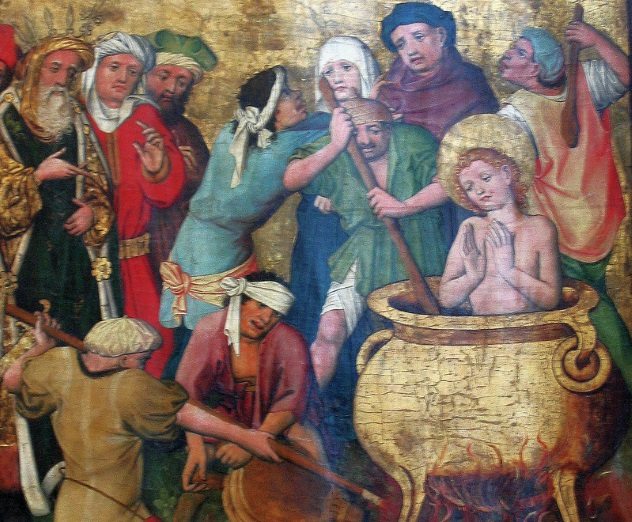
Saint Vitus (died c. 303) was another martyr in the Roman Empire, this time a young one.[8] He was only 12 when he was converted to Christianity by two servants in his father’s household, a tutor and a nurse. The boy’s father was clearly enraged by this meddling, as he turned to corporal punishments and eventually torture to force all three to recant their beliefs. When they failed to do so, the father eventually had all three thrown into boiling oil, leading to their deaths. And you thought being grounded for a month was bad.
Legend has it that a rooster was thrown into the vat of oil at the same time Vitus was. (Perhaps it had ticked off the boy’s father by waking him up one too many times.) The bird’s association with early rising rubbed off on Vitus as well. So, the next time you’re afraid of oversleeping and missing your bus, ask for help from Vitus (and his deep-fried rooster)!
2 Ulcers
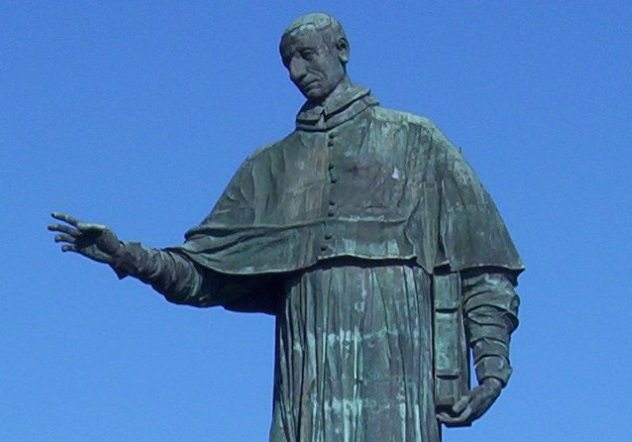
Saint Charles Borromeo (1538–1584) was a Renaissance cardinal in the Church as well as the bishop of Milan.[9] He grew up amidst great wealth and inherited numerous lands and estates when his brother died. However, unlike many high-ranking churchmen of the period, who seemed to value their station over their duties to the faithful, Charles was an example of Christian charity.
Upon his brother’s death, many encouraged Charles to leave the Church and marry to carry on the family line, since he was the last surviving male of the Borromeo family. He refused—and even sank his vast personal holdings into relief efforts during the plague of 1576. He liquidated most of the family wealth while providing food, clothing, shelter, and medical care to the plague victims of Milan and the surrounding area. Much of historians’ later knowledge about this outbreak comes from Charles’s notes.
Plague often produces buboes and ulcers in its victims. Therefore, Charles is often invoked against ulcers of all types.
1 Death From Artillery
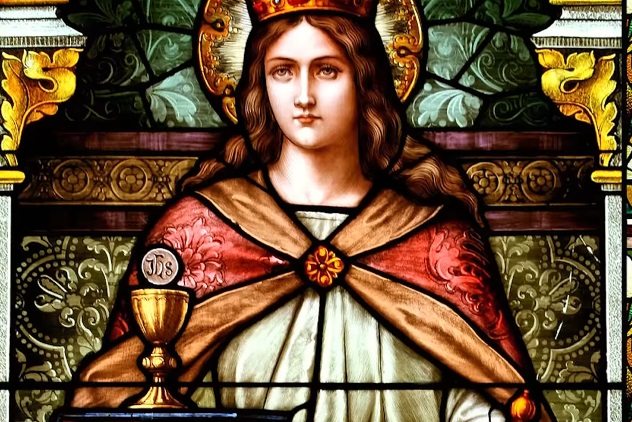
Fear of death by artillery, while justified in some eras (such as trench life in World War I), is something that few of us have to deal with today, thankfully. However, should you for some reason require this kind of protection, look no further than Saint Barbara (died c. 267).[10] And no, it doesn’t matter that she died well before cannons were invented.
Barbara’s story is passed down through oral tradition rather than historical works, but it remains packed with detail. A young girl locked away in a tower by her overbearing father, she was eventually converted to Christianity through one of her tutors. Her father, learning of this, became enraged. (One can only imagine the heavenly conversation between her and Saint Vitus about the dangers of domineering parents.) He resorted to increasingly harsh punishments and torture to get her to reject her newfound faith and finally denounced her to the local Roman authorities. She held firm throughout.
At long last, the authorities ordered her beheading during a general purge of Christians in the city. Her father, bitter and vengeful, volunteered to carry out the sentence himself. After she was martyred, however, divine retribution was not long in coming: Both her rage-driven father and the official who had ordered her execution were struck by lightning and consumed by fire soon afterward.
Given her connection to this explosive form of death, Christians began to ask for her protection against similar deaths for themselves. That remains the case today. However, since Barbara is also the patron saint of artillerists—the ones firing the cannons—you had better hope that your prayers for protection are stronger than their prayers for success!
David, a man of faith and history, lives in Maryland with his wife, three daughters, and one very excitable dog.
Read more about Catholic Saints on 10 Amazing Feats Performed By Saints and 10 Strange Legends And Images Of Saints.








